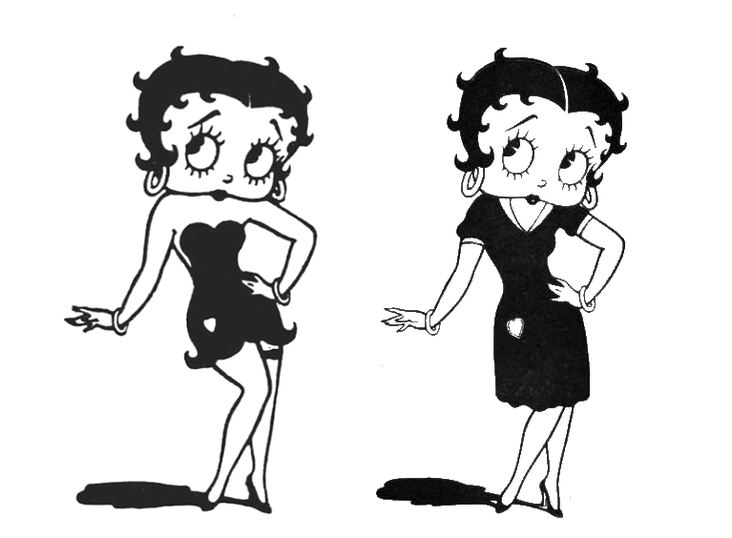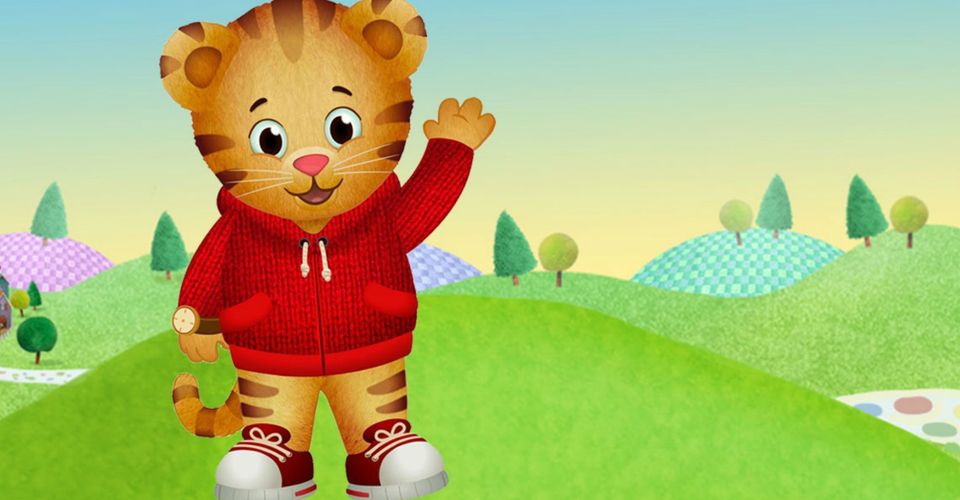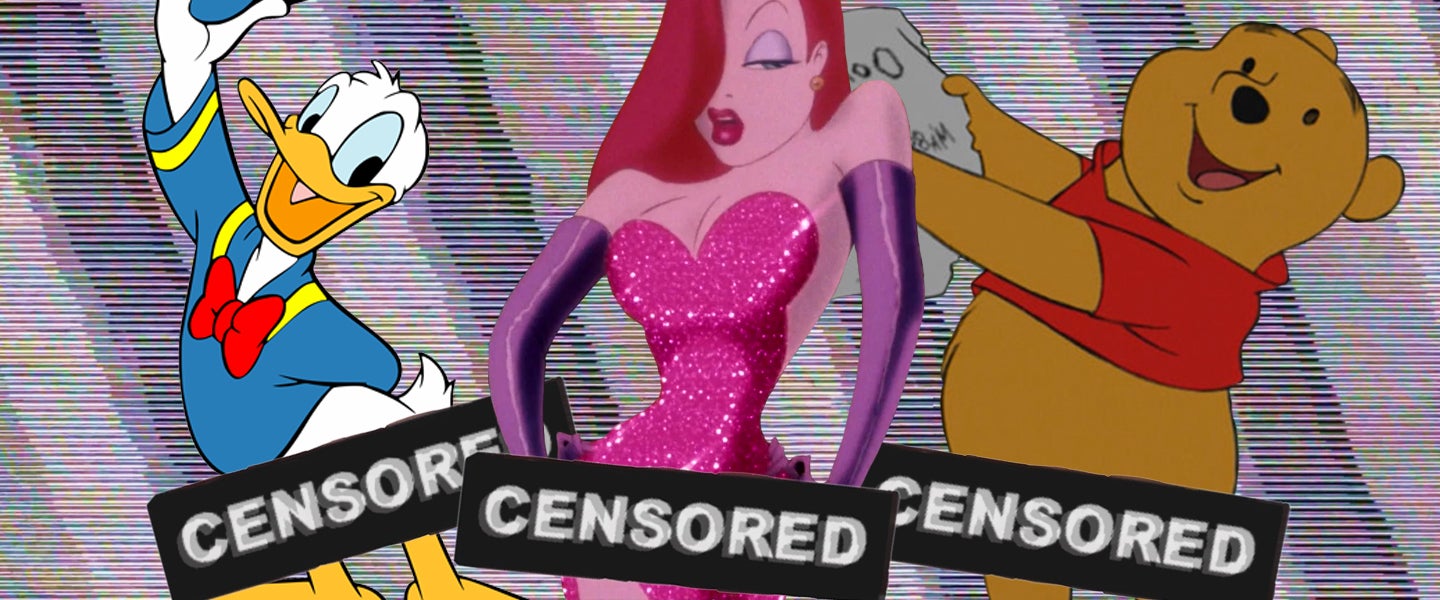No one objects to a totally naked cartoon animal. After all, animals don’t wear clothes, so why should they in cartoons? But controversy — or at least questions — do seem to arise when the concept of clothing is introduced into a cartoon world, but is then worn indiscriminately. As the gang at Cheers once mused, “Why is it that Donald Duck wears a top and no bottom, whereas Mickey wears a bottom and no top?”
Along with such discussions, a number of rumors have developed about the controversial nature of these characters, like the story that Donald Duck was banned in Finland for his pantless ways, and that Pooh was likewise banned in Poland. Most of these controversies are false, but there’s usually more than a nugget of truth behind them, too.
So, relax, take off your pants and find out the truth behind every pantless cartoon myth and controversy.
Donald Duck
The most famous pantless cartoon tale is that Donald Duck was banned in Finland because he doesn’t wear any pants. Largely speaking, the story isn’t true, though there were two incidents that occurred in Finland that contributed to the legend. The first happened in 1975 in the communist-dominated town of Kemi, when city council members decided to cease a subscription to Donald Duck magazines for a children’s home in the town. As odd as it sounds, the grounds for the termination were political, as the communist representatives labeled Donald Duck as an imperialist. This accusation can actually be tracked back to a popular Chilean book from 1971 called How to Read Donald Duck, which accused Disney characters of being a propaganda machine for capitalism. The book was a global hit amongst socialist and communist ideologies, and it was translated into many languages, including Finnish.

Once Kemi terminated their subscription, it became a global news story, with headlines like “Town in Finland Bans Donald Duck,” which wasn’t entirely correct, but the story was born that Donald was finished with the Finnish.
Two years later, a similar incident happened in Helsinki, when a politician named Markku Holopainen proposed that, to save money, the city government would cut back on its budget to youth centers, including terminating its regular order of Donald Duck comic books. Though he would later claim that the choice was purely budgetary, Holopainen did accuse Donald of having an inappropriate lifestyle, as Donald had been “going steady with the same woman for 50 years without result,” and that, because he had only nephews, the Donald comics featured “not a single normal family.” Once again, the story went global and became oversimplified to be understood as Donald being “banned.”
According to the myth-busting site Snopes, the story in Helsinki reared its head again a year later, when Holopainen was up for reelection and his opposition labeled him as “the man who banned Donald Duck from Helsinki.” Unfortunately for him, the label stuck and Holopainen lost his seat. It’s important to note, though, that nowhere in Finland — including those two towns — was Donald ever “banned,” they just terminated subscriptions to his comic book. Oddly enough, too, the global news stories actually ended up making Disney cartoons more popular in Finland, Donald included.

How this story became linked to Donald’s lack of pants isn’t entirely clear, but in a 1977 issue of the periodical New Age, the Helsinki story was reported with the following ending: “Among the other complaints against Donald Duck was that he appeared to have a common law marriage with Daisy Duck — a practice severely frowned upon in Finland. Besides, he doesn’t wear pants.” While it’s possible that an unrelated joke about Donald’s pantslessness merged over time with the stories from Finland, this New Age excerpt — which appears to be a joke to close the article — may indeed be the birth of the rumor.
But the question still remains as to why Donald lacks pants altogether, and to answer that, I turn to Dave Bossert, a 32-year veteran of the Walt Disney Company and an animation historian. “I tend to view this more in regards to the design of the character,” he tells me. “For one, Donald is covered in feathers, so that would hide anything down there.” He goes on to explain that animation thrives with “simplicity” and that the design of a character is about communicating what someone needs to know with the least amount of information (i.e., Sonic is fast, so he has only sneakers). With Donald, you need to know that he’s a sailor and to communicate that, all he needs is the hat and shirt — he doesn’t need any more than that, including pants (even if some people seem to take issue with it).
Winnie the Pooh
We’ve previously talked about how Winnie the Pooh is kinda-sorta-but-not-really banned in China, but that was because of his resemblance to the Chinese president, not because of him not wearing pants. In the town of Tuszyn, Poland, however, some politicians did have a problem with Pooh’s wardrobe during a council meeting in 2014. The issue surrounded a playground in the Polish town, with representatives of the town discussing which children’s character should serve as the mascot for the park. When someone suggested Pooh Bear, another politician stated, “The problem with that bear is it doesn’t have a complete wardrobe. It is half naked, which is wholly inappropriate for children.”

From there, the conversation descended into the absurd, with representatives saying that Pooh was of “dubious sexuality” and that he “doesn’t wear underpants because it doesn’t have a sex. It’s a hermaphrodite.” The whole thing was recorded and leaked to the Polish media, soon spreading around the world. In short order, many understood that the town had “banned” Pooh and others thought all of Poland had rejected that willy nilly silly old bear. In reality, Tuszyn simply rejected Pooh as the playground mascot on seriously absurd grounds (though some did say the discussion was a joke).
It’s hardly a question of a sexual nature, but it is curious that Pooh is the only member of his crew to wear any clothing (save for Roo). Originally, Pooh didn’t have any clothes when he debuted in 1926, but in 1932 he began wearing a shirt full-time. While this was perhaps just to make Pooh a bit more distinct, Bossert points out that a shirt without pants brings attention to Pooh’s childlike nature, much like how a toddler will run around without pants. It’s also not unusual for children to put clothes on their stuffed animals, and Pooh, even if he is an underdressed hermaphrodite, is still just Christopher Robin’s stuffed bear.
Betty Boop
Debuting in 1930, Betty Boop was a cartoon flapper girl and is considered to be the first cartoon sex symbol. The intended audience for Betty Boop cartoons were adults, yet that didn’t stop organizations like the National Legion of Decency from lodging complaints about Betty Boop’s sexual nature. Such puritanical organizations tend to be condemned in the modern era, but it’s worth noting that Boop was portrayed as being a 16-year-old girl and that the cartoons often put her in rather gross situations.
In 1934, Hollywood introduced the Motion Picture Production Code, which was a way to self-regulate and self-censor the content reaching American audiences. Betty Boop was an early target of the code, and as a result, Betty Boop received an overhaul, making her characterization less sexualized and her skirt a bit longer, extending just past her trademark garter belt.

Jessica Rabbit
Following in the footsteps of Betty Boop was the cartoon sex symbol of the late 1980s, Jessica Rabbit. While people have been drooling over Jessica since her debut in theaters, a rumor began spreading once the film made its way to home video — that, if you pause the film just right, you can see up her skirt, revealing that she’s not wearing underwear for a frame or two of the film.
Hiding sexual imagery in Disney cartoons is nothing new, but the upskirt scene of Jessica Rabbit has become the stuff of legend, and even been branded an official “legend” by Snopes, which means that it isn’t known to be real or fake, but instead it’s “essentially unprovable.” As Snopes explains, “For a few frames of Jessica’s second spin her underwear supposedly disappears, revealing Jessica’s unclothed nether regions. … In these frames Jessica’s pubic region is colored darker than the surrounding flesh-colored areas. Whether this coloration was intended to suggest nudity or was the result of a paint error is unknown. The intention might have been to paint the darker regions a color representative of underwear, but an error in the color markup chart produced some ambiguous images instead.”
More than 30 years after the film’s release, the YouTube clip of the scene has amassed over one million views, and the Jessica Rabbit nudity rumor will seemingly never die. As one YouTube comment put it, “This is what YouTube’s slow-motion feature was made for.”
Daniel Tiger
By the time Daniel Tiger debuted in 2012, pantless cartoon characters were the norm, with audiences well used to characters like Donald Duck, Pooh Bear, The Animaniacs and countless others. But that didn’t stop one interviewer from asking the show’s producer and showrunner, Christopher Loggins, about Daniel Tiger’s lack of pants in 2019. Fortunately, Loggins had an answer at the ready, saying, “The legacy is that Daniel Tiger from the original Mr. Rogers’ Neighborhood is Daniel’s dad, and technically, he [Daniel Sr.] didn’t even have legs, so it’s not like we had a reference point.”
Loggins is clearly joking, but the real answer goes back to what Bossert said about the simplicity of design when it comes to cartoons. Daniel Tiger is a cute little tiger who is from the world of Mr. Rogers’ Neighborhood and Mr. Rogers’ signature pieces of attire were the red sweater and his sneakers, so Daniel gets a sweater and sneakers as an homage to Rogers, and he simply doesn’t need more than that.

I’m still, though, waiting for an answer as to why so many of Mr. Rogers’ puppets were such fucking nightmare fuel.

Teenage Mutant Ninja Turtles
This one is more of a controversy that was averted before it began. In the original 1980s comic books of the Teenage Mutant Ninja Turtles, the Turtles, much like real turtles, had tails. In 1987, when the Turtles were being transformed into an action figure line for Playmates Toys, the tail was still there on the original clay sculpt of the first action figure. But as revealed on Netflix’s The Toys That Made Us, it was decided that when seen from straight on, the tail was “too phallic looking,” as TMNT co-creator Peter Laird explained. So, it was decided that the Turtles would lose their tails before the action figure line began. Since then, the Turtles have appeared sans tails in every comic, cartoon and toy but for the occasional throwback to the original comics.

Wonder Woman
“Wonder Woman to finally start wearing pants.”
That was the 2010 headline from The Christian Science Monitor when DC comics announced that Wonder Woman’s iconic suit was undergoing an overhaul with the 600th issue.

With a new design by comics legend Jim Lee, Wonder Woman would be ditching her pantless costume in favor of a new design with black pants and a jacket. The effort was meant to modernize Wonder Woman and get her out of what was essentially a swimsuit, as many had complained for years about Wonder Woman’s skimpy costume. But, like so many other things in comic books — like, for example, the concept of death — the change would be short-lived and by late 2011, Wonder Woman was back to wearing her trademark undies.
Sorry Diana, maybe someday comic book fans will tolerate seeing you in pants.
Fritz the Cat
Finally, while all the other pantless cartoon characters weren’t looking for controversy, Fritz the Cat courted it with delight. The 1972 adult animated film was based on the comic strip by Robert Crumb. The comics had a dedicated cult following throughout the late 1960s and early 1970s, as part of that era’s “Underground Comix” scene, and in 1969, production began on a film complete with full-on animated sex scenes featuring the pantless cartoon cat. The film was so controversial it ended up being the very first animated film to receive an “X” rating.

The rating initially hampered the release of the film, but it ultimately gave Fritz the Cat an allure that ended up making the cartoon a hit. The film made over $100 million, and it’s even credited with setting the stage for future adult animation like The Simpsons and South Park.
That said, part of that legacy still tracks back to the original pantless cartoon trailblazers, namely Donald Duck, Winnie the Pooh and Porky Pig (who debuted in 1935 and has curiously escaped any pantless controversy). These three superstar cartoon characters made it okay for generations of cartoon characters to go without pants. If you will, this trio sparked a pantless revolution in the 1930s that, 80-some-odd years later, is finally hitting the human world thanks to everyone now working from home.
Here’s hoping that progress won’t be undone once everyone returns to work.

